For decades, the diamond has reigned supreme in the world of engagement rings. Its unparalleled sparkle and durability made it a symbol of eternal love and commitment. With its rich history, a diamond ring isn’t just a piece of jewelry; it’s a tradition passed down t ough generations, a symbol of a promise that’s as enduring as the stone itself.
However, there’s a colorful shift happening in the world of engagements. A new trend is emerging, one that embraces the individuality and uniqueness of every love story.
Alternative gemstones are stepping into the spotlight, challenging the conventional diamond with their vibrant hues and varied meanings. From the deep blues of sapphire to the lush greens of emerald, these gemstones are offering a personalized touch to engagement rings.
This shift isn’t just about fashion or taste; it’s a reflection of changing values and perspectives.
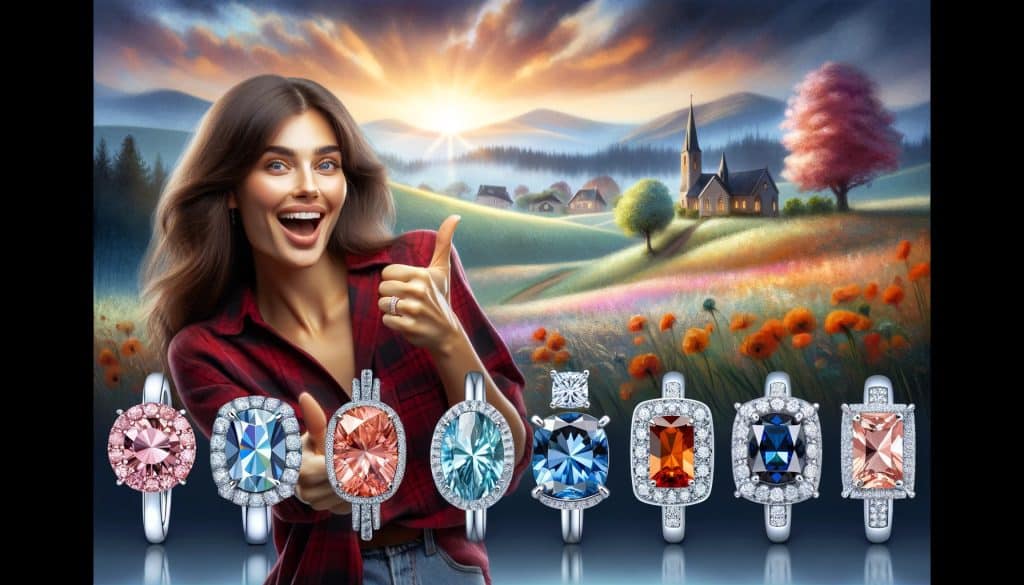
Today’s couples are looking for something that represents their unique bond, a symbol that reflects not just a commitment to each other but also their personalities and stories. They’re seeking sustainability, ethical sourcing, and a connection to the stone that goes beyond the traditional.
As we delve deeper into this colorful world, we’ll discover that each gemstone has a story, a personality, and a significance that can resonate deeply with individuals and couples. This movement towards alternative gemstones isn’t just about challenging tradition; it’s about expanding our understanding of what an engagement ring can represent.
In the following sections, we’ll explore the fascinating world of these gemstones, understanding their qualities, histories, and the special meanings they hold.
Whether you’re drawn to the timeless elegance of a diamond or the unique charm of a colored gem, the choice of an engagement ring is a deeply personal decision. It’s a choice that reflects your journey, your love, and the future you’re building together.
< class="wp-block-separator has-alpha-channel-opacity"/>The World of Colorful Gemstones
Engagement rings are evolving from traditional norms, welcoming a diverse palette of colored gemstones.
This change reflects a broader shift in preferences, where personal expression and uniqueness are as important as the symbols of love and commitment themselves. In this vibrant world, every color tells a story, and every gemstone carries its own unique charm and significance.
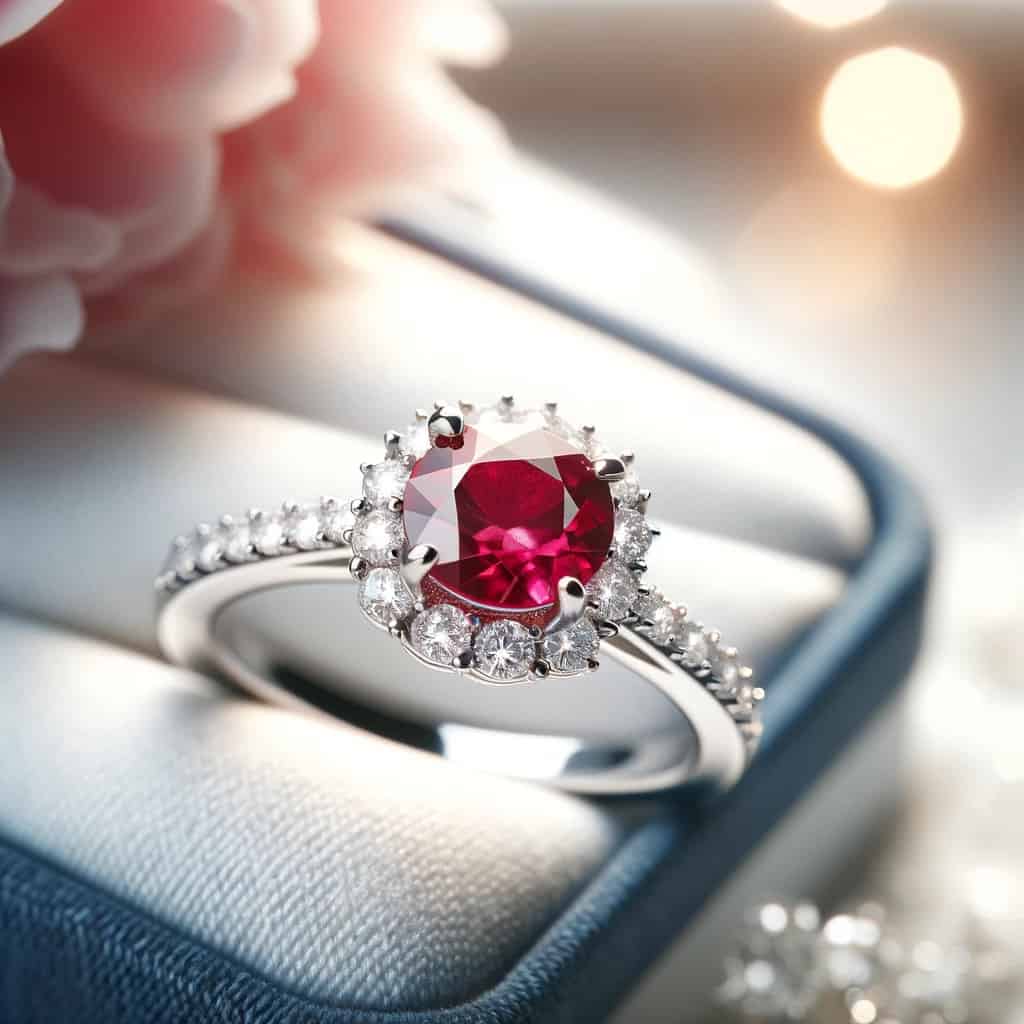
Sapphire: The Royal Choice
- Durability: Exceptionally hard, second only to diamonds, making it a perfect choice for everyday wear.
- Color Range: Traditionally blue, sapphires also come in pink, yellow, and even white.
- Symbolism: Represents loyalty and honesty, aligning perfectly with the ideals of marriage.
Ruby: The Gem of Passion
- Durability: Similar to sapphires in hardness, rubies are suitable for a lifetime of wear.
- Color: Known for its vibrant red, symbolizing love and passion.
- Rarity: High-quality rubies are rare, often making them more valuable.
Emerald: The Stone of Royalty
- Durability: Slightly softer, requiring careful wear, but highly prized for its unique look.
- Color: Deep green, often with natural inclusions, known as the garden of the emerald.
- Symbolism: Associated with Venus, the goddess of love, emeralds are believed to bring harmony and loyalty.
Amethyst: The Lavender Dream
- Durability: Reasonably hard, but can fade in direct sunlight over time.
- Color: Ranges from light lavender to deep purple.
- Symbolism: Once a stone of royalty, amethyst represents clarity and calmness.
Aquamarine: The Sea’s Treasure
- Durability: Fairly durable with a hardness that allows for daily wear.
- Color: Light blue to greenish-blue, reminiscent of the sea.
- Symbolism: Believed to ensure a happy marriage, symbolizing harmony and mutual understanding.
Topaz: The Spectrum of Sunlight
- Durability: Quite hard, suitable for everyday wear.
- Color Variety: Available in a range of colors from blue to pink and even colorless.
- Meaning: Topaz is thought to bring friendship and fidelity, ideal qualities for a marriage.
In this colorful spectrum, each stone offers more than just aesthetic value; they bring their histories, myths, and symbolism. Choosing a gemstone becomes a journey of exploring these qualities and finding the one that resonates most with the couple’s story and values.
This trend towards colored gemstones in engagement rings isn’t just about fashion—it’s about making a choice that’s as unique as the bond it symbolizes.
< class="wp-block-separator has-alpha-channel-opacity"/>Popular Gemstone Alternatives to Diamonds
As we explore alternatives to the traditional diamond in engagement rings, t ee gemstones stand out for their beauty, durability, and rich symbolism: Sapphire, Ruby, and Emerald. Each of these gems brings its unique charm to the table, offering couples a chance to express their love story in a distinct and colorful way.
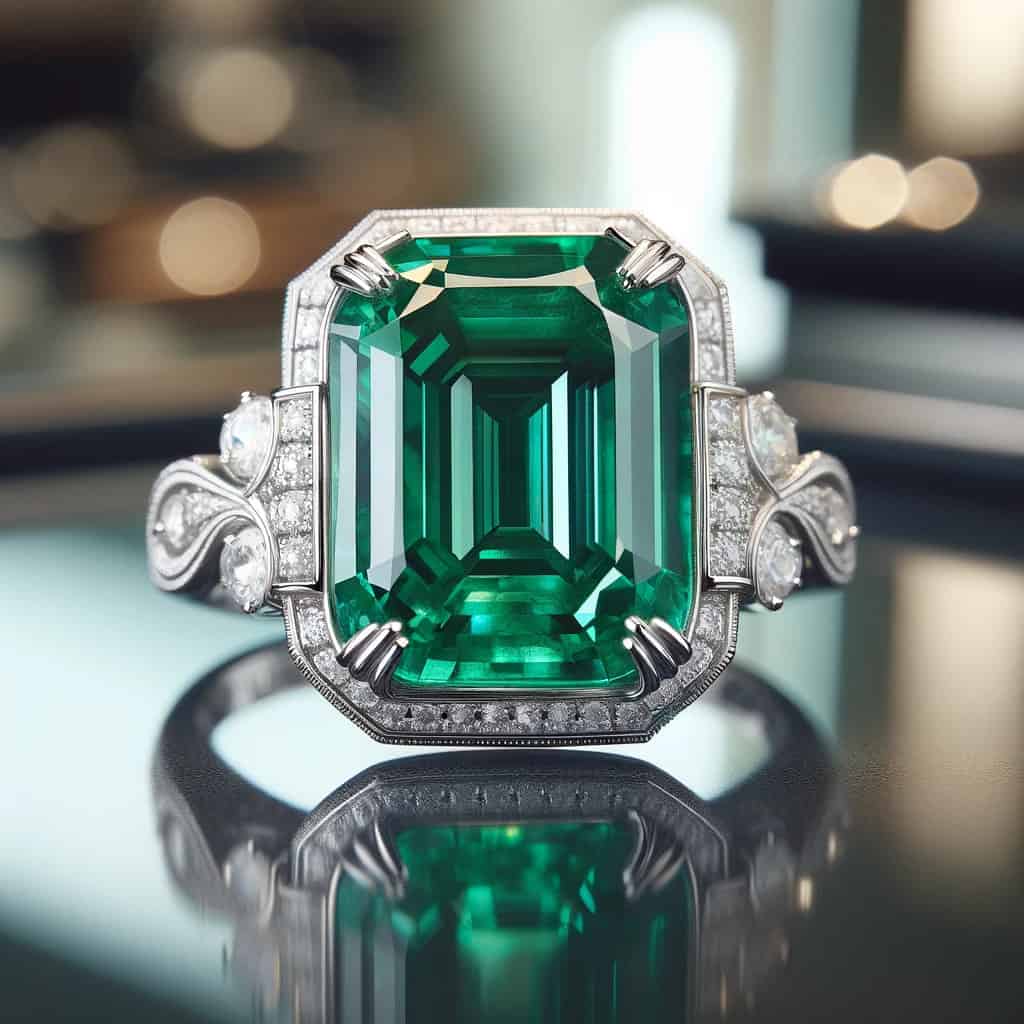
Sapphire: A Spectrum of Elegance
- Varieties: While the classic blue sapphire is most renowned, sapphires also dazzle in pink, yellow, and even rare white shades. Each color variant offers a different aesthetic, catering to diverse tastes.
- Historical Significance: Sapphires have adorned the robes and jewelry of royalty for centuries, symbolizing nobility, truth, and sincerity.
- Symbolism: In the context of marriage, a sapphire represents loyalty and faithfulness, making it an ideal symbol for a lifelong commitment.
Ruby: The Heart of Passion
- Characteristics: Rubies are famed for their deep, vivid red color. They are just as hard as sapphires, making them a durable choice for an engagement ring.
- Symbolic Meanings: The ruby’s rich red hue is often associated with love, passion, and the heart’s desires. It’s also a symbol of courage and emotion, adding depth to its allure as an engagement ring stone.
Emerald: The Gem of Enchantment
- Unique Features: Emeralds are known for their lush green color, which can range from light to deep hues. They often contain inclusions, sometimes referred to as ‘jardin’ (French for garden), which add character to each stone.
- Care and Maintenance Tips:
- Avoid Hard Impacts: Emeralds are softer than sapphires and rubies, so it’s essential to protect them from hard knocks.
- Regular Cleaning: Clean with a soft cloth and mild soap; ultrasonic cleaners are not recommended.
- Professional Check-ups: Regular check-ups with a jeweler can ensure the setting remains secure and the stone is in good condition.
Each of these gemstones not only offers a visually stunning alternative to diamonds but also carries with it a legacy of symbolism and history. Whether it’s the royal elegance of sapphire, the passionate depths of ruby, or the enchanting allure of emerald, these gemstones allow individuals to express their unique love stories in a meaningful way.
< class="wp-block-separator has-alpha-channel-opacity"/>Lesser-Known Gems for Unique Rings
When it comes to selecting a gemstone for an engagement ring, the choices extend far beyond the well-known sapphire, ruby, and emerald.
There are lesser-known gems that offer unique beauty and charm, perfect for those seeking something different. Morganite, Aquamarine, and Tanzanite are t ee such gems, each with its own distinct appeal.
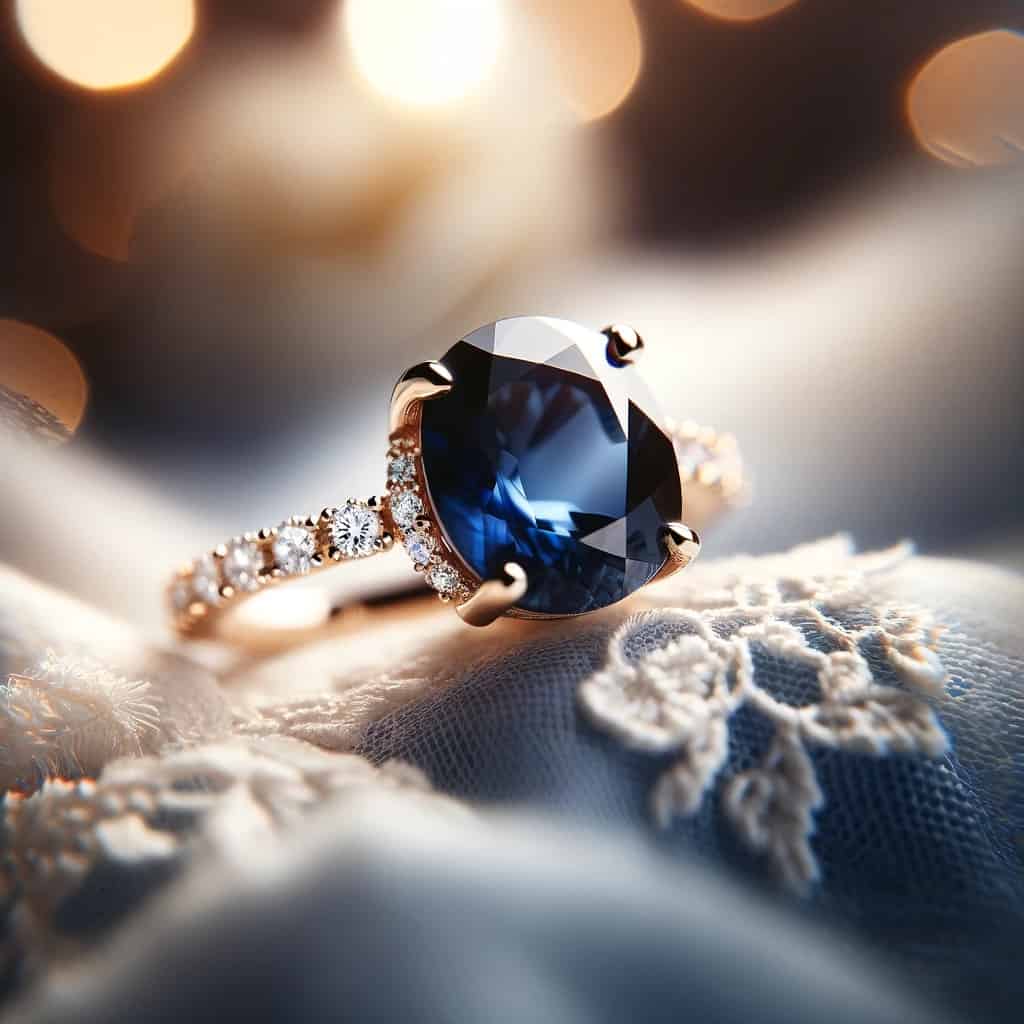
Morganite: The Pink Promise
- Description: Morganite is a gemstone from the beryl family, related to emerald and aquamarine. It’s admired for its soft pink to peach hues, which exude warmth and romance.
- Appeal: The gentle color of morganite makes it a popular choice for those seeking a feminine and modern look. It pairs beautifully with rose gold settings, enhancing its pink tones. Morganite is also known for its clarity and excellent light refraction, adding to its allure.
Aquamarine: The Serene Symbol
- Features: Aquamarine, with its tranquil sea-blue color, ranges from light to deep blue. It is known for its clarity and can be cut in various shapes to enhance its sparkle.
- Suitability for Daily Wear: Aquamarine is a hard and durable gemstone, making it suitable for everyday wear. Its resistance to scratching and breaking makes it a practical yet beautiful choice for an engagement ring.
Tanzanite: The Exotic Blue Velvet
- Rarity: Tanzanite is a rare gemstone found only in one place in the world – near Mount Kilimanjaro in Tanzania. This exclusivity adds to its appeal as a unique gemstone for an engagement ring.
- Color Properties: Tanzanite is treasured for its striking blue-violet color, which can change depending on the lighting. This chameleon-like quality adds a sense of mystery and depth to the stone.
Choosing a lesser-known gemstone like Morganite, Aquamarine, or Tanzanite for an engagement ring not only sets the piece apart from more traditional choices but also allows the wearer to express their individuality and personal style.
Each of these gemstones brings a unique beauty and story, making them captivating choices for a ring that symbolizes a lifetime of love.
< class="wp-block-separator has-alpha-channel-opacity"/>The Importance of Gemstone Quality
Selecting a gemstone for an engagement ring involves more than just choosing a type and color. The quality of the gemstone plays a crucial role in its appearance, durability, and value. This is where understanding the 4 Cs—Cut, Color, Clarity, and Carat—becomes essential.
These criteria, commonly associated with diamonds, are equally significant when assessing the quality of colored gemstones.
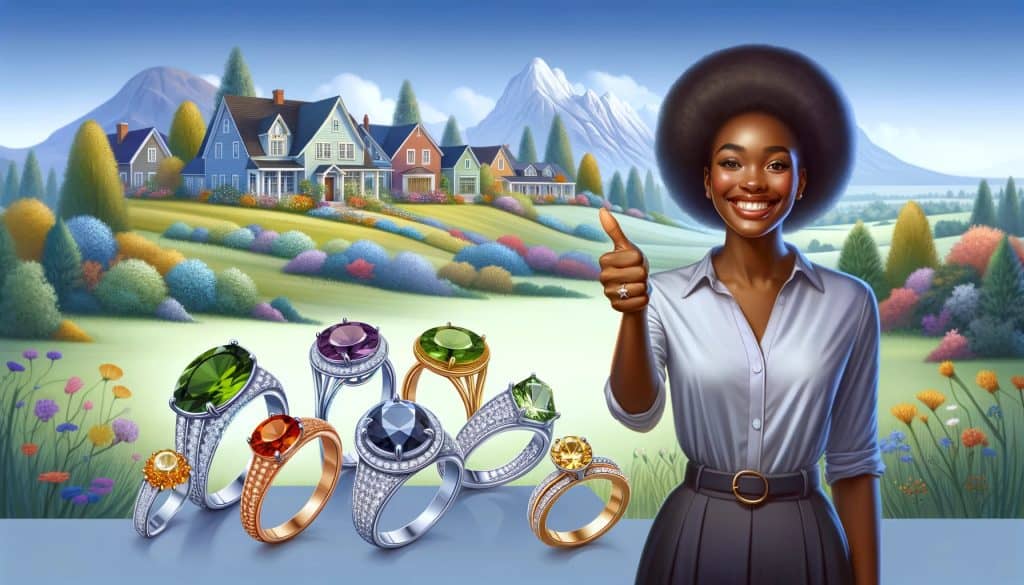
Cut: The Facets of Beauty
- Definition: Cut refers to the way a gemstone is shaped and faceted. It impacts how light is reflected and refracted within the stone, contributing to its brilliance and sparkle.
- Impact on Gemstones: A well-cut gemstone will maximize the stone’s natural color and minimize any visible inclusions. The cut also influences the stone’s symmetry and proportion, crucial for its overall appearance.
Color: The Hue of Emotion
- Importance: Color is often the most noticeable aspect of a gemstone. It includes the hue (the color itself), tone (the lightness or darkness of the color), and saturation (the intensity of the color).
- Effect on Value: The more vibrant and pure the color, the higher the gemstone’s value. For example, a deeply saturated blue sapphire will typically be more valuable than a lighter, less intense one.
Clarity: The Window to Perfection
- Understanding Clarity: Clarity refers to the presence (or absence) of inclusions or imperfections within a gemstone.
- Variation Among Gemstones: Some gemstones, like emeralds, typically have more inclusions, while others, like sapphires, are often clearer. The clarity affects not just the stone’s look but also its structural integrity.
Carat: The Measure of Majesty
- Carat Weight: Carat is the unit of weight for gemstones. One carat is equivalent to 200 milligrams.
- Influence on Appearance and Price: Larger stones are rarer and therefore often more expensive. However, the carat weight should be considered in conjunction with the other Cs to determine the overall quality and value of the gemstone.
Understanding the 4 Cs helps in making an informed decision when selecting a gemstone. It’s not just about the size or the immediate appeal of the stone; it’s about appreciating the intricate aspects that contribute to its overall beauty and worth.
A high-quality gemstone, chosen thoughtfully, not only enhances the ring’s appearance but also ensures its lasting value and significance.
< class="wp-block-separator has-alpha-channel-opacity"/>Gemstone Shapes and Settings
When selecting a gemstone for an engagement ring, its shape and setting are as crucial as the type of stone itself. These elements play a significant role in defining the ring’s overall look and can dramatically affect the gemstone’s visual impact.
Exploring different cut styles and setting types allows for a more personalized and aesthetically pleasing ring.

Various Gemstone Cut Styles
- Round Cut: The most popular shape for gemstones, known for its versatility and brilliance. It’s ideal for maximizing light reflection, especially in transparent gemstones.
- Oval Cut: Offers a unique elongation, making it appear larger on the finger. Its symmetrical design is flattering and provides a modern twist to the traditional round cut.
- Cushion Cut: A blend of a rectangle and an oval, with softened corners. This vintage-inspired cut has gained popularity for its romantic and soft appearance.
Setting Types to Enhance Gemstone Beauty
- Prong Setting: Features metal claws that hold the gemstone in place. This setting allows maximum light exposure from all angles, enhancing the stone’s brilliance. It’s ideal for showcasing larger gemstones.
- Bezel Setting: Encircles the gemstone with a thin metal rim custom-made to hold the stone precisely. This setting is known for its security and modern look and is ideal for an active lifestyle.
- Halo Setting: Involves a center stone surrounded by smaller gemstones, often creating a dazzling impact and making the center stone appear larger.
- Pavé Setting: Small gemstones are set closely together, covering the ring’s surface with a sparkling effect. It’s perfect for adding extra shimmer to the ring without overpowering the central stone.
Each cut style and setting type offers different advantages, from enhancing the gemstone’s natural beauty to ensuring its security on the ring. The choice often depends on the wearer’s lifestyle, personal style, and the gemstone’s characteristics.
For instance, a person with an active lifestyle might prefer a more secure bezel setting, while someone looking for a statement piece might opt for a halo setting. Ultimately, the right combination of shape and setting will not only highlight the gemstone’s best features but also reflect the wearer’s personality and taste.
< class="wp-block-separator has-alpha-channel-opacity"/>Choosing the Right Gemstone: Personal Style and Meaning
Selecting the right gemstone for an engagement ring is a deeply personal decision. It’s not just about the stone’s aesthetic appeal; it’s about what it represents to the individual and the couple.
Here are some tips on matching gemstones to personal style, their significance, and considering the role of birthstones and personal preferences in making this meaningful choice.

Matching Gemstones to Personal Style
- Consider Lifestyle: For active individuals, choose harder stones like sapphires or rubies that can withstand daily wear. Softer stones, like opals, might be better suited for those with a more gentle lifestyle.
- Reflect Personality: The color and type of gemstone can reflect a person’s personality. Vibrant stones like emeralds or tanzanite may appeal to bold, expressive individuals, while classic stones like blue sapphire may suit those with a more traditional taste.
- Fashion Sense: Consider the individual’s fashion sense. Someone who prefers a minimalist style might appreciate the clean lines of a solitaire setting, whereas someone who loves glamour might prefer a ring with additional diamond or gemstone accents.
Significance and Symbolism of Gemstones
- Symbolic Meanings: Each gemstone carries its own history and symbolism. For example, emeralds are often associated with renewal and love, while rubies symbolize passion and courage.
- Telling a Story: Some couples choose gemstones that have personal significance, such as the stone of the place where they met or a gem that symbolizes a shared experience or value.
The Role of Birthstones and Personal Preferences
- Birthstones: Incorporating birthstones can add a personal and astrological touch to the engagement ring. For instance, using a garnet for a January birthday or a pearl for June can make the ring more meaningful.
- Personal Preferences: Ultimately, the choice should reflect the wearer’s preferences. Some might prefer the uniqueness of an unconventional gemstone, while others might cherish the classic beauty of a diamond.
Choosing the right gemstone is about more than just the physical appearance of the ring; it’s about reflecting the wearer’s identity, their journey, and the unique story they share with their partner. A thoughtful consideration of personal style, symbolism, and preferences can make the engagement ring truly one-of-a-kind.
< class="wp-block-separator has-alpha-channel-opacity"/>Caring for Your Gemstone Engagement Ring
An engagement ring is not just a symbol of commitment but also a valuable piece of jewelry that requires proper care and maintenance. Different gemstones have unique characteristics, which means their care needs can vary.
Additionally, considering professional cleaning and insurance is crucial to ensure the ring’s longevity and safety. Here are some maintenance and care tips tailored to different gemstones, along with advice on professional upkeep and insurance.

Maintenance and Care Tips for Different Gemstones
- Diamonds, Sapphires, and Rubies: These hard gemstones can be cleaned with warm soapy water and a soft brush. They are durable but should still be protected from harsh impacts.
- Emeralds: Avoid exposure to heat and chemicals, as they can damage the oils often used to enhance the stone’s clarity. Clean gently with a soft, damp cloth.
- Opals: These require special care as they can dry out and crack. Avoid exposure to extreme temperature changes and harsh chemicals.
- Pearls: Clean with a soft, dry cloth. Pearls can be easily scratched and lose their luster, so they should not be stored with other jewelry.
- Tanzanite and Morganite: These stones are softer and more prone to scratching. Store them separately and clean them gently with a mild soap solution.
Professional Cleaning and Insurance
- Regular Check-Ups and Professional Cleaning: Having your ring professionally cleaned and checked by a jeweler once or twice a year can prevent damage and loss. Jewelers can check for loose settings and wear.
- Insurance Considerations: Insure your engagement ring against loss, theft, and damage. Engagement rings are often high-value items, and insurance can provide peace of mind.
- Keep Documentation: Maintain all documentation related to the ring, including purchase receipts, gemstone certificates, and insurance policies. This is crucial in case of loss or damage.
Caring for your gemstone engagement ring ensures that it remains as beautiful and significant as the day it was given. Regular maintenance, understanding the specific needs of the gemstone, and professional care can protect your investment and keep it sparkling for years to come.
< class="wp-block-separator has-alpha-channel-opacity"/>Sustainable and Ethical Considerations
In the world of fine jewelry, and particularly in the realm of engagement rings, the importance of sustainable and ethical considerations has come to the forefront. As consumers become more conscious of their purchases’ impact, the focus on ethically sourced gemstones and sustainable mining practices has grown.
This section delves into these crucial aspects, highlighting the importance of responsible choices in the jewelry industry.

Ethical Sourcing of Gemstones
- Traceability: Knowing the origin of the gemstones is key. Ethically sourced gemstones are tracked from the mine to the market, ensuring they are mined and sold under fair conditions.
- Labor Practices: Ethical sourcing also involves ensuring that the mining and cutting of gemstones do not exploit workers but rather provide them with fair wages and safe working conditions.
- Conflict-Free Assurance: Particularly important for diamonds, ensuring that the gemstones are not funding conflicts or human rights abuses in war-torn areas is a critical aspect of ethical sourcing.
Promoting Sustainable Practices in Gemstone Mining
- Environmental Impact: Sustainable gemstone mining seeks to minimize the environmental impact by reducing the disruption of the land, preserving biodiversity, and employing eco-friendly mining techniques.
- Supporting Small-Scale Mining: Many gemstones are mined by small-scale miners. Supporting these operations can promote sustainability as they often have a smaller environmental footprint compared to large-scale mining operations.
- Recycled and Lab-Grown Options: Another aspect of sustainability is the use of recycled gemstones or opting for lab-grown alternatives. These choices reduce the demand for newly mined stones, thereby lessening the environmental impact.
The Role of Jewelers and Consumers
- Jeweler Responsibility: Jewelers play a crucial role in promoting sustainability by sourcing their gemstones from responsible suppliers and educating consumers about the origins and impacts of their purchases.
- Consumer Awareness: Consumers can drive change by demanding transparency and ethical practices in their jewelry purchases. By choosing ethically sourced and sustainable gemstones, consumers can support responsible practices in the industry.
Sustainable and ethical considerations in choosing gemstones for engagement rings are not just about making a fashion statement but about making a positive impact.
By prioritizing these aspects, both jewelers and consumers can contribute to a more responsible and conscious jewelry industry, ensuring that the symbols of love and commitment are also symbols of hope and responsibility for the planet and its people.
< class="wp-block-separator has-alpha-channel-opacity"/>Conclusion: Embracing the Spectrum of Love
As we conclude our exploration of the diverse and vibrant world of gemstones for engagement rings, it’s clear that the perfect gemstone is more than just a matter of beauty. It’s a reflection of personal style, individual values, and the unique story that each couple shares.
In this colorful spectrum, every hue tells a story, and every stone holds a meaning, offering an opportunity to symbolize your love in a way that’s as special as your own journey.
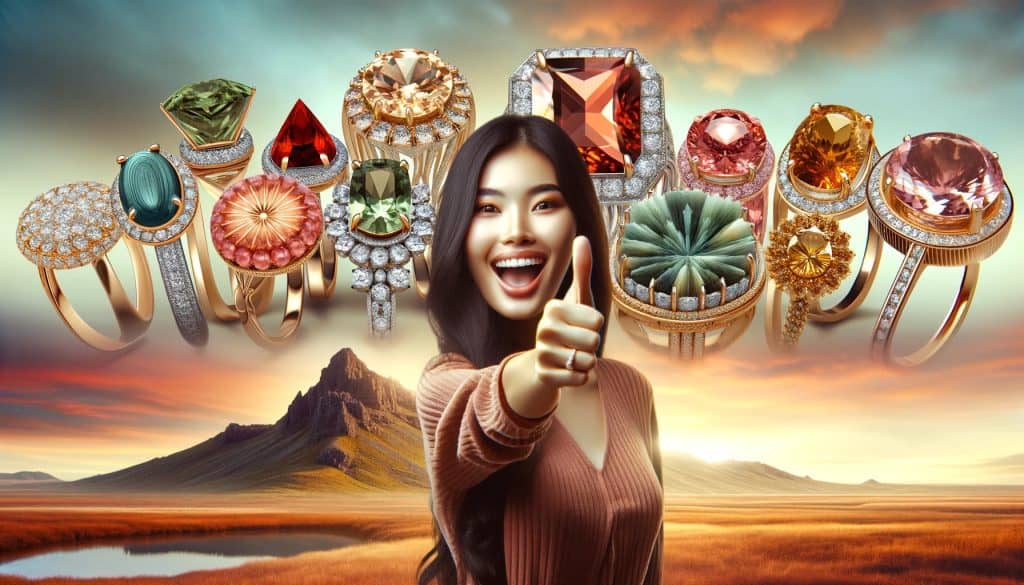
A World of Choices
The realm of gemstones is vast and varied, offering a multitude of choices beyond the traditional diamond. From the deep blues of sapphire to the passionate reds of ruby, the serene greens of emerald, and the unique hues of lesser-known stones like morganite and tanzanite, there is a gemstone to match every personality, style, and love story.
Personal Resonance
Choosing a gemstone for an engagement ring is a deeply personal decision. It’s about finding a stone that resonates with you, one that reflects your personal style, your values, and the bond you share with your partner.
Whether it’s the birthstone of your loved one, a gemstone from a place you hold dear, or simply a color that captivates you, the choice should be a reflection of what you hold in your heart.
Beyond Beauty
As you embark on this journey, remember to consider not just the aesthetic appeal but also the ethical and sustainable practices associated with your chosen gemstone. In doing so, you’re not just creating a symbol of your love, but also contributing to the well-being of the communities and environments affected by gemstone mining.
The First Step in a Lifetime Journey
Your engagement ring is more than just a piece of jewelry; it’s a testament to your unique love story and the life you’re about to embark on together. Let the gemstone you choose be a testament to this beautiful journey. As you explore the world of gemstones, let your heart and your values guide you to the perfect choice, one that will symbolize your love and commitment for years to come.
In the end, the perfect gemstone is the one that speaks to you, the one that lights up your eyes and your heart, just like your love for each other.


